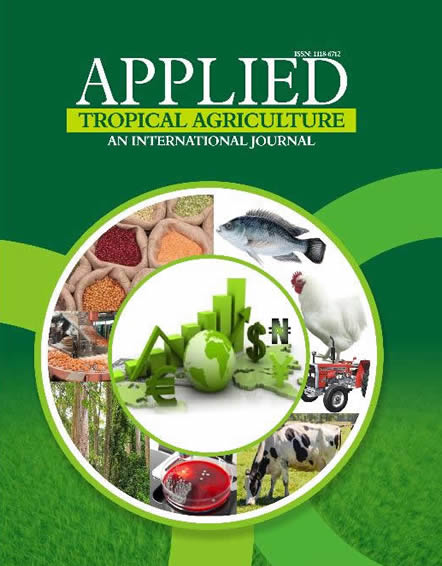The aim of this study was to evaluate the effect of Tribulus terrestris aqueous seed extract on sex reversal in Coptodonzillii. Three days old fry of C. zillii (mean weight 0.03 ± 0.0g) from the Federal University of Technology Akure fish farm, were randomly selected and assigned to 15 glass tanks (70cm x 45cm x 45cm) of 20 litres water capacity to five different treatments with three replicates, with each treatment representing varying concentrations levels of ASET. The graded levels of aqueous seed extract of T. terrestris were (0.00, 0.10, 0.15, 0.20 and 0.25 g/l for each treatment group denoted as T1, T2, T3, T4 and T5 respectively. Each glass tank was stocked with 15 fry and a total of 225 fry was used for the experiment. The fry were immersed in the ASET for three days, and then every 3 days of 30 days, the water in all glass tank was changed entirely. The T. terrestris extract solution was freshly prepared 10 times every 3 days along the immersion period. The fry was fed finely ground artificial diet containing 35% crude protein three times daily between 08:00 and 09:00 and 12:00 and 01:00 and 16:00 and 17: 00h GMT to apparent satiation. The highest survival percentage (84.7%) was observed in control group, but there was no significant difference (P>0.05) in survival percentage among the different treatment groups. Immersion treatment with ASET caused significant increase (P<0.05) in percentage of males compared to that in untreated control. The highest percentage of males (80.2) was observed in 0.25 g/l group and it was significantly higher (P<0.05) than all other treatment categories. The extract showed presence of phytochemicals such as tannins, saponin, alkaloids, steroids and terpenoid which might be associated with its androgenic property
PAPER TITLE :EVALUATION OF AQUEOUS SEED EXTRACT OF TRIBULUS TERRESTRIS AS ANDROGENIC AGENT FOR PRODUCTION OF ALL MALE RED-BELLY TILAPIA, COPTODON ZILLII (GERVAIS 1848)
APPLIED TROPICAL AGRICULTURE | VOLUME 24 NUMBER 2 2019
Paper Details
- Author(s) : Oladipupo, T. M., Nwanna, L. C. and Fagbenro, O. A.
- Abstract:


